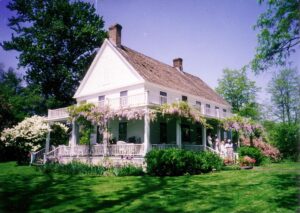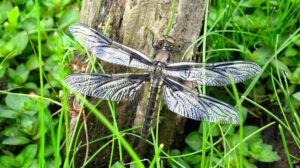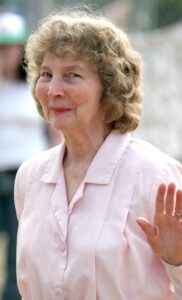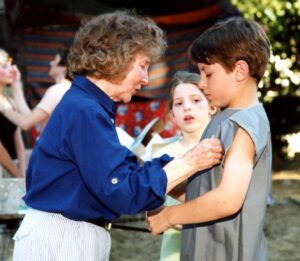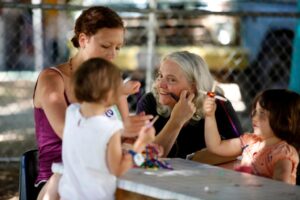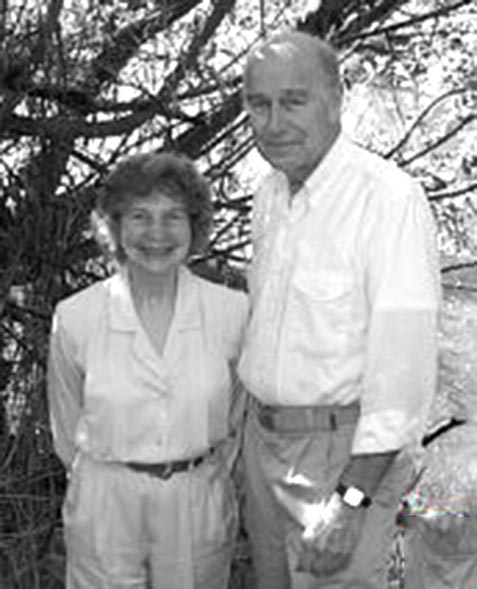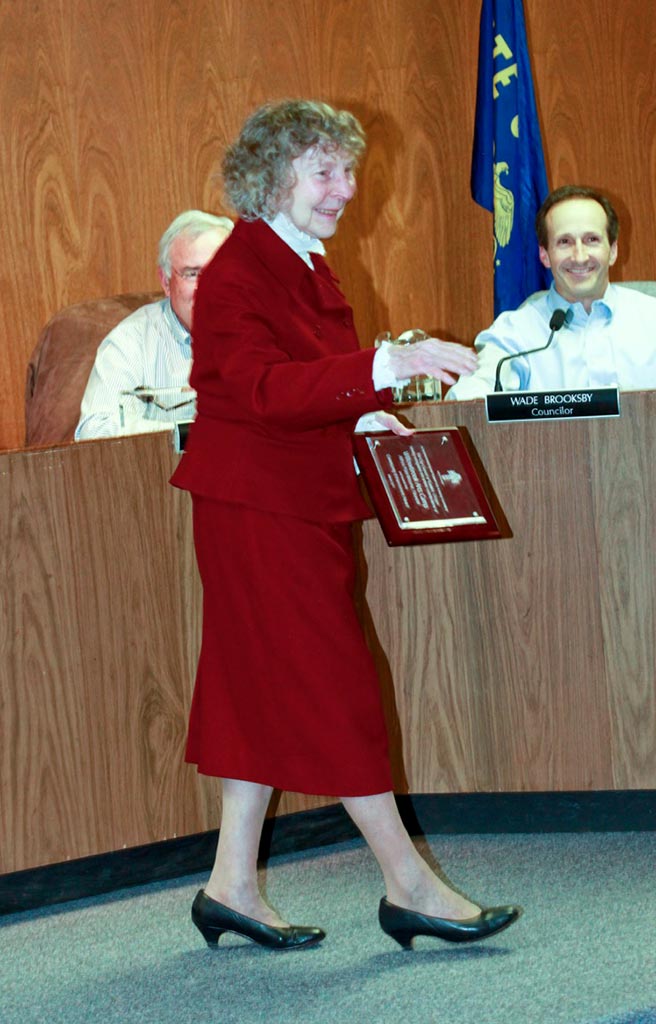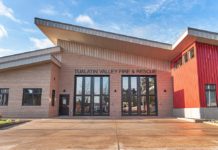Behind the big hedge next to the WES station you can barely see Tualatin’s only building on the National Register of Historic Places, the 1858 Sweek House. John and Maria Sweek and descendants made a permanent mark on early city history. But it is two residents in this remarkable house who this year can celebrate 35 year-old legacies of their own.
Althea Pratt rescued the deteriorating Sweek House in 1955 and gradually made improvements as she raised three daughters, primarily on a teacher’s salary. Her tireless advocacy for environmental issues and historical preservation would later match well with Jack Broome, a founding partner of the Portland architectural firm Broome, Selig, and Oringdulph whose firm was consulting with the City of Tualatin to help create the city’s first urban renewal plan. Jack had been the lead architect for Meridian Park Hospital completed in 1973. He was thus very familiar with Tualatin land use issues. The couple married in 1980. Now in their 90s, they continue to live on and treasure the historic property.
The Wetlands Conservancy is Created in Tualatin
History was not the only passion for Althea. Her commitment to stewardship of wetlands began with concern over encroaching industrial development on the marshes near her beloved home and westward along Hedges Creek. She mobilized other residents to the cause and encouraged children to dress up as wetlands birds and animals to help get signatures on petitions. Boy Scouts built bird boxes. Hundreds attended public meetings and testified before City Council to support protection of the marsh. In 1976, Althea was appointed to serve on Tualatin’s Urban Renewal Committee. At their first meeting, she proposed that wetland preservation should be adopted as an urban development goal. In 1979, the City agreed to set aside 57 acres of Hedges Creek Marsh for education and wildlife protection. A Friends of Tualatin Wetlands organization was formed and other donations of acreage were added to the Hedges footprint.
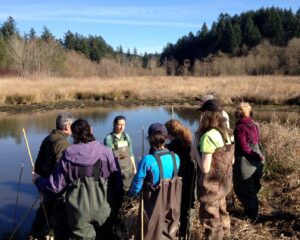
With the help of regional environmentalists, the Wetlands Conservancy was incorporated as a land trust in 1981 based in Tualatin with Jack serving as its unpaid executive director. Now led by Esther Lev, the Conservancy’s board and staff in Portland today monitor some 1544 acres of wetlands in 32 preserves all around Oregon in partnership with landowners, businesses and other nonprofit organizations.
Says Tualatin resident Ed Casey who has been on the Conservancy board since its founding, “Jack and Althea started out to protect their backyard habitat in Tualatin and ended up creating a national award-winning and respected land trust.”
Willowbrook Summer Arts Camp Takes Birth at Sweek House
Starting in 1978, under the banner of the Center for Development of Human Potential, Althea offered summer coursework at Sweek House for graduate students enrolled in her “Giftedness, Creativity and Human Potential” course at Portland State University. They got practical experience working with children who came to participate in “Saturday School” art classes. The summer camp opened in 1982 as “Adventures in the Arts” with a staff of 10 serving 20 children ages 4-12, focused on nature study and the arts—pottery, fine art, crafts, dance, music, puppetry, and drama, including Shakespeare.
In 1985, “Willowbrook” was officially added to the camp title to honor the name John and Maria Sweek originally gave to their homestead. Still working out of the main house, front porch, big barn and other outbuildings, Althea directed the program, wrote plays, baked treats and did laundry for children who got muddy in the adjacent wetlands. Enrollment began to climb as word spread beyond Tualatin. By the end of the 1980s, ages of students ranged from to 3-18.
In 1991, concerned about growing numbers with the only access across the railroad tracks, the City of Tualatin offered the unimproved Browns Ferry Park site. Willowbrook made the move to the big open field in 1992, using improvised systems of tents, water barrels and RV batteries for electricity to serve the campers attending from one day to all six weeks. Families and the public enjoyed a new major drama performance each week, including a ballet, a Shakespeare production and a full-scale musical on an outdoor stage.
As the 2000’s arrived, offerings had expanded to include fine arts, world cultural arts and crafts, Native American art, calligraphy, drama, stagecraft, weaving, basketry, stained glass, pottery, instrumental and vocal music, many styles of dance, nature, drama, puppetry, creative writing, photography, film making, and more. Enrollment exceeded 1,000 each summer and Althea continued to serve as unpaid Director.
Willowbrook now serves more than 1700 children each year at Browns Ferry Park with a summer staff exceeding 200 and a half-million dollar budget. Althea stepped down in 2007 at age 85 and daughter Rebecca picked up the full-time reins. A volunteer board of directors helps maintain Althea’s original goal of helping youngsters realize their creative potentials. Parent surveys show a big spending impact on Tualatin as families shop for food, gas and other needs as they move to and from Willowbrook during the last week of June through the first week of August.
Today, a number of Willowbrook staff have been teaching for over 20 years, and some were once loyal campers themselves. Thousands of alumni point to their magical days at Willowbrook as important influences on their lives.
Ann Smith, Willowbrook parent and board member from Tualatin, says “In our family Willowbrook is far more than a summer camp, it is a way of life that our girls anticipate all year long. There is something immensely special that comes alive during the six weeks that camp is in session. From the pottery wheels to the drama stage and the weaving tent to the Native American art area, there is something for everyone and no day is ever the same. And perhaps my favorite thing about Willowbrook is that the essence of it – the ability for kids to be themselves, to experience the power of free choice, and to let their creative spirit flow – lives on far beyond camp session. It becomes part of who these kids are and influences how they go through life. I’m proud to have our girls be part of the Willowbrook family, and thankful that such an incredible place exists right here in our backyard.”


